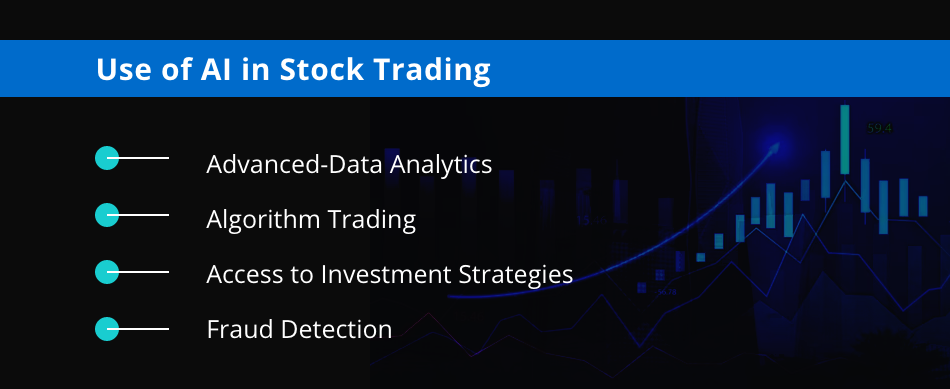20 Best Info On Choosing AI Stock Investing Platform Sites
20 Best Info On Choosing AI Stock Investing Platform Sites
Blog Article
Top 10 Tips For Evaluating The Security And Privacy Of Ai Platforms For Predicting And Analysing Stocks
Security and privacy of trading platforms that are based on AI are important, since they deal with personal and financial data. An unauthorized or unintentional misuse of data can lead to massive financial losses as well as reputational harm. Here are the top ten tips to help you assess the security and privacy features on these platforms.
1. Assess the security of your data
Secure transmission of data: Make sure your platform is using secure protocols (e.g., TLS/SSL) to protect data that is transmitted between your device and their servers.
Encryption while in transit Verify that the sensitive data being stored on a server has been encrypted using strong encryption standards such as AES-256.
End-to-end encryption: Determine whether the platform provides end-to-end encryption for sensitive communications or information.
2. Examine the authenticity of measures
Two-factor authentication (also called copyright) is a fantastic method to improve security.
Make sure you have biometric authentication.
Password policy: Verify whether the platform follows strict policies on passwords (e.g. minimum length or requirements for complexity).
3. Examine for Compliance
Financial regulations: Ensure that your platform is in compliance with the applicable financial regulations (e.g. SEC, FINRA or MiFID II).
Laws on data protection: Make sure you are in compliance with privacy laws (e.g. GDPR, CCPA), if you're doing business with regions protected by these laws.
Audit certifications. Check whether the platform has passed third-party security tests or has been certified (e.g. SOC 2 and ISO 27001).
Review Controls for Accessing Data
Role-based Access: Ensure that the platform is using role-based controls (RBAC) to restrict access to data only to users who are authorized.
Permission levels: Look to see if different members or users of a team have different permissions.
Activity monitoring. Check whether your application keeps track of and monitors user's activities.
5. Evaluate the Management of Vulnerability
Regular updates: Ensure that your platform is updated with software frequently to patch any vulnerabilities.
Verify that your platform is regularly screened for penetration testing in order to detect security flaws and then fix them.
Programs for bug bounty: Find out whether there's a bug bounty program available on the platform to motivate security researchers from other sources to share vulnerabilities.
6. Evaluate Data Privacy Policies
Transparency: Go through the privacy policies of the platform to know how your personal information is collected, used, and shared.
Data minimization is the method of ensuring that only the data needed for the functionality of a platform is collected by the platform.
Third-party sharing: Check whether the platform shares data with third parties and, if so the conditions under which it is shared.
7. Secure API usage should be inspected
API security: Ensure that the API of the platform API uses secure authentication methods, such as OAuth and API keys, which are used to secure data exchanges.
Limiting the rate. Check the API's rate limiting to prevent misuse.
Check access logs. Check that the platform monitors API usage, and logs it to track usage.
8. Evaluate Incident Response and Recovery
Plan for the response to incidents: Make sure the platform is equipped with a plan to handle security breaches and data breaches.
Examine the platform's policies on notification to determine if the platform informs users quickly in the event of a breach of security.
Backups of data - Make sure your platform is equipped with a plan for disaster recovery, and that it regularly backs the data up.
9. Review Physical Security Measures
Data center security: Make sure the servers of your platform are located in data centers that are equipped with physical security measures, like surveillance and access controls.
Redundancy: Ensure that there are redundant platforms on the platform to ensure that the data is available in the event of hardware failure.
Geographic distribution: To improve resilience, make sure that the data is spread across several geographic locations.
10. Test privacy controls for user testing
Data deletion: Ensure that the platform lets you delete all of your data if you decide to stop using it.
Privacy settings - You should find out if the platform allows you to set privacy settings to let you to control what data is shared with others or made public.
Check the anonymization of data for analytics and machine learning.
Bonus Tips:
Reputation and reviews of users Check out the feedback and reviews of users to gauge how secure and private a platform.
Trial period: Take advantage of an unpaid trial or demo to test the security features and privacy controls.
Support for customers: Ensure that the platform offers a solid support for customers with security issues or concerns.
Use these guidelines to assess the privacy and security level of AI stock prediction/analysis trading platforms. In this way your financial and personal information are secure. A secure trading platform is not only a method to protect your assets but it also helps build confidence and trust. See the most popular learn more here about best ai trading app for website info including ai investment app, investment ai, stock ai, best ai trading app, ai for investment, market ai, ai stock, ai trading tools, ai investment app, best ai stock and more.
Top 10 Tips To Assess The Transparency Of Ai-Based Trading Platforms For Stocks
Transparency is a key factor in assessing AI-driven trading and stock prediction platforms. It allows users the ability to trust the platform's operations, understand how decisions were made and to verify their accuracy. Here are 10 suggestions for evaluating the transparency of platforms.
1. AI Models explained in detail
Tips: Make sure the platform offers a clear explanation of the AI models and algorithms that are used to make predictions.
Why: Understanding the underlying technology helps users assess its reliability and drawbacks.
2. Disclosure of Data Sources
TIP: Make sure the platform is able to disclose the data sources it uses (e.g. historical stock information or social media).
What's the reason? Knowing the data sources ensures the platform uses credible and accurate information.
3. Performance Metrics and Backtesting Results
Tip: Be sure to seek out transparent reports on performance metrics, such as accuracy rates and ROI, as well as testing results back to back.
This allows users to verify the effectiveness of the platform and its historical performance.
4. Updates and notifications in real-time
Tips. Check if the platform is able to provide real-time information and alerts regarding trades or changes in the system, like trading forecasts.
The reason: Real-time transparency keeps users informed about the most critical actions.
5. Open Communication about Limitations
TIP: Make sure that the platform discusses openly the dangers and limitations of their trading strategies as well as predictions.
Why: Acknowledging limitations builds confidence and allows users to make better choices.
6. Raw Data to Users
Tip: Determine if the AI model is able to gain access to raw data, intermediate results or both.
What's the reason? Users can do an analysis on their own using the raw data as well as validate their predictions.
7. Transparency and honesty in the cost of fees and expenses
Be sure that the platform provides every cost that are due, including subscription fees as well as any hidden costs.
Transparent Pricing: It helps build trust by preventing unexpected costs.
8. Reporting Regularly and Audits
Check whether the platform issues regular reports, or undergoes audits by third party auditors to confirm its effectiveness.
Why: Independent Verification adds credibility and guarantees accountability.
9. Explanability of Predictions
Tip : Look for information about the process by which the platform creates predictions or specific suggestions (e.g. the importance of features or decision trees).
Explainability can help users comprehend the rationale behind AI-driven decisions.
10. User feedback and support channels
Tips: Find out whether there are clear channels of communication for users to provide feedback and also receive assistance. Also, check whether it is clear in responding to issues that users have raised.
Why: Responsive communications demonstrate an interest in the transparency of communications and satisfaction of users.
Bonus Tip Regulatory Compliance
Make sure the platform is compliant with all financial regulations. It should also announce its compliance status. This adds another layer of credibility for the platform.
You can make informed decisions by weighing all of these aspects. See the best ai in stock market examples for website recommendations including stock predictor, free ai stock picker, how to use ai for copyright trading, best ai trading platform, stocks ai, ai stock investing, can ai predict stock market, ai stock predictions, ai stock prediction, ai for trading stocks and more.